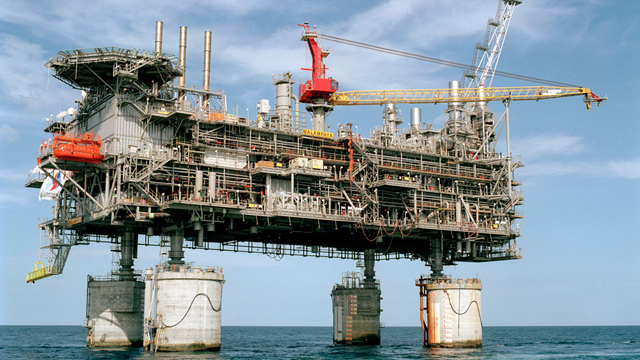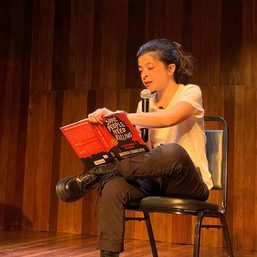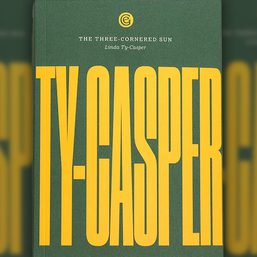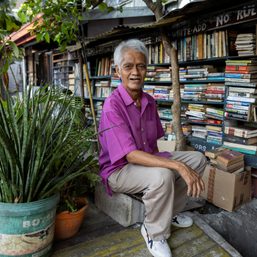SUMMARY
This is AI generated summarization, which may have errors. For context, always refer to the full article.

MANILA, Philippines (UPDATED) – There is no cash left of the multi-billion-peso Malampaya fund.
This is what National Treasurer Rosalia de Leon told the Senate on Monday, October 21, during a briefing by the Development Budget Coordination Committee (DBCC) on the 2014 National Expenditure Program.
De Leon said there is “no more cash” from the Malampaya fund, but gave assurances the P137 billion – or the amount that’s supposed to be remaining – is still “available” for appropriation.
The statement highlighted Senator Ralph Recto’s earlier concerns.
A couple of weeks ago, Recto asked the budget department to explain why over a hundred billion pesos “in cash” from the Malampaya Fund was missing. Recto had been concerned about the possibility of the cash being used “without disclosing that it’s from the Malampaya fund.”
Back then, De Leon had responded the billions from the Malampaya Fund remain “perfectly intact,” and that the P137 billion “is not gone.”
She had called Recto’s statement as “misleading,” but did not explain back then that the cash – which Recto was specificially concerned about – had been used.
De Leon’s explanation on Monday that there is no more cash corresponds with Budget Secretary Florencio Abad’s past statements.
In a recent text message, Abad also confirmed to Rappler there is no cash sitting around from the Malampaya fund.
“The cash portion of the Malampaya Fund goes to the General Fund and supports the budget every year,” he said. “It’s not earmarked for anything. Rather than borrow money, it’s what the national government uses to finance the budget. The appropriation portion is what is used in case need arises since it’s automatically appropriated.”
The Bureau of Treasury, however, maintans a special account under the General Fund for the Malampaya Fund called Fund 151, which accounts for the revenue earned by the Malampaya project through royalties. It also records the specific expenditure items charged against Fund 151.
At the hearing, Finance Secretary Cesar Purisima and Abad agreed with De Leon’s statement and said that even if there was no cash, the appropriation is still available.
Discretionary
The Malampaya fund has come under fire following allegations that the previous Arroyo admininistration had misused it. Alleged pork barrel scam mastermind Janet Lim Napoles reportedly channeled P900 million from the Malampaya fund to her dubious non-governmental organizations. (READ: How the Malampaya fund was plundered)
Consisting of royalties collected from operations of the Malampaya gas and oil fields in the waters off Palawan province, the fund is essentially a discretionary fund.
An obsolete law, Presidential Decree (PD) No. 910 issued by former President Ferdinand Marcos, allows the use of proceeds from gas and oil fields for any “other purpose as may be directed by the President,” thus opening the Malampaya fund to misuse.
In September, the Supreme Court stopped the government from further using the Malampaya fund under this provision. In a temporary restraining order that also covered the lawmakers’ Priority Development Assistance Fund (PDAF), the Court stopped the DBM and other agencies from using the Malampaya fund under the phrase “for such other purposes as may be hereafter directed by the President” under Section 8 of Presidential Decree 910.
At the briefing, Abad and Purisima agreed on the need to include the Malampaya fund under the General Fund instead.
Abad said lawmakers should “reconsider whether in fact this facility is still going to be useful or better to put the money in the General Fund so that properly it can be accounted for.” For now, he said, the government is unable to use it completely since “it’s used to support the budget.”
He said it should be studied whether the special fund is still needed since the government “is no longer a big player in the electricity industry and the direction is towards privatization.”
A statement from the Finance Department earlier this month also justified the use of the Malampaya fund to fund the budget, saying that under Fund 151, “the Malampaya fund is used to finance energy-related programs of the Department of Energy (DOE) and/or pay off National Government obligations provided for in the General Appropriations Act (GAA).”
“Further, E.O. 848 issued on October 13, 2009, Authorizing the Use of the Special Account in the General Fund (Fund 151) of the Department of Energy for Purposes as may be directed by the President of the Philippines,” it added.
The DBCC – composed of the budget secretary, the director-general of NEDA, the Executive Secretary, the finance secretary, and the governor of the Central Bank of the Philippines – is in charge of recommending to the President the level of annual government expenditures and the ceiling of government spending.
No cash in 2011
A July 2011 press release from the Department of Budget and Management (DBM) retrieved by Rappler further explains details on how the cash from the Malampaya fund is used.
Back then, Abad explained “there is no P79.4 billion in cash sitting in any bank and ready to be used by the government at any time.” The P79.4 billion was the amount collected by the Malampaya fund at that time.
The statement said “the annual revenue inflow in the form of net proceeds from the sale of petroleum from the Malampaya Natural Gas Project is accounted for as part of the yearly revenue program supporting the budget proposal submitted to Congress.”
The statement clarified that every year, the proceeds are used to fund the approved expenses of Congress. Back then – two years ago – it said “P26.2 billion of Malampaya proceeds is projected under the P138 billion non tax revenue program of the government.”
Abad said, “for every supplemental disbursement charged against the Malampaya fund which is not within the approved annual fiscal and expenditure programs,” the Bureau of Treasury then borrows cash to finance the project.
“This disbursement is ‘over-and-above’ the annual expenditure program and is ‘deficit-creating,’ unless these are offset against other programmed expenditures,” the statement continued.
‘Only energy-related’
The fund comes from the Malampaya natural gas project that has been operating off the shores of Palawan for 13 years. It is the single biggest investment in the Philippines, with proceeds amounting to P170 billion over the years.
Less than P25 billion was spent during the Arroyo administration, while P15 billion has been used under President Benigno Aquino III.
Earlier this month, a plunder case was filed against Arroyo for the alleged misuse of P900 million from the fund released to the agrarian reform department. (READ: How the Malampaya fund was plundered)
The Palace has continuously insisted Aquino has used the Malampaya fund only for energy-related projects despite his power to use it for other reasons.
Presidential Spokesperson Edwin Lacierda has made strong statements on Aquino’s use of the Malampaya fund, saying the government has “strictly interpreted that particular provision [of PD 910] as energy-related so, no one, I dare say no one can question the President on how he uses the Malampaya funds.”
As of 2012, it had been tapped to fund projects under various agencies, including the departments of the interior, public works, agriculture, defense, finance, and health.
The government expects royalties of up to $10 billion from Malampaya’s 20-year operations. – Rappler.com
Add a comment
How does this make you feel?









There are no comments yet. Add your comment to start the conversation.